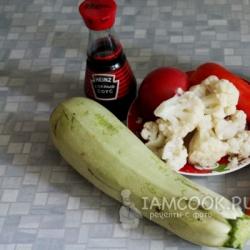How to choose canned peas. Test purchase: how to choose the right green peas. Inspecting the appearance of the container
It is a popular ingredient for making salads. It is used as a side dish for meat dishes and for other purposes. This product has many beneficial properties that are preserved when preserved. It is a canned product of this type that is most often used in cooking, since fresh green peas retain their juiciness and other qualities for a short time after harvesting.
Green pea quality standards
Helps to select and evaluate peas GOST R 54050-2010, which applies to canned natural products of this type. According to this standard, peas are divided into products of the highest, first and second commercial grade.
- The grains must be whole and without any impurities of the shells.
- The presence of brown fodder peas in canned food is excluded.
- The smell is weak, natural, characteristic of canned green peas. There should be no foreign tastes or aromas.
- The color of the beans is uniform in one package: light green or olive.
- The highest grade is characterized by a soft, uniform consistency. For the first there is a soft, heterogeneous consistency and for the second, a harder, heterogeneous consistency.
- The fill should be transparent with a greenish or olive tint.
- Depending on the variety, up to 6-10% of the mass fraction of broken grains is acceptable.
- Products of the first and second grade may have a slight starchy aftertaste.
- Single grains are possible that differ in color from the bulk of the peas.
- The presence of a small sediment of pulp particles and slight turbidity is acceptable for premium products.
- There may be a sediment in the form of starch and a cloudy filling of green peas; GOST allows this for goods of the first and second grade.
- There should be no mineral or other foreign impurities.
- The mass fraction of peas directly in canned food is at least 60%.
How to choose green peas?
GOST provides information on what the product should be. But in the store it is in packaging, usually in an iron can. How to understand which peas are better in such a situation? There are some tips for buyers to help in this matter.
- Choose jars with the production date printed on them. If it is cut out on the paper label or embossed on the bottom of the lid, this indicates outdated equipment for the production of canned peas.
- The best choice is green peas that were canned in May or June, which you will know by the production date. During these months, young but already mature peas are harvested.
- Choose products manufactured in accordance with GOST, which must indicate the commercial grade - highest, first or second.
- You can shake the jar of peas. If there is no sound of pouring pouring, then the manufacturer has not spared the product for canning. The presence of knocking, dull sounds indicates old and hard peas in a jar with a small volume of filling. It is better not to buy such a product.
When you open canned green peas, pay attention to the color of the grains. If they are green, such products can be used for making salads and as a side dish. A yellowish color indicates that the peas are overripe and more rigid. This product is best used in cooking, adding it to various dishes with additional processing: boiling, stewing, and so on. Brown pea grains are defective and should not be eaten.
Every housewife must have a jar of green peas in her bins, especially in the autumn-winter period, when salads such as Olivier salad, cod liver salad, squid salad, etc. become popular. It is so tasty and healthy that it would seem, what disadvantages could it have? In fact, there is a lot to think about here, so we suggest taking a closer look at this wonderful product and finding out what the benefits and harms of canned green peas are, and how to choose them correctly.
And here are its best advantages:
- High content of vegetable protein. It is contained here up to 18-20 grams. per 100 gr. product. Thanks to this, it is excellent for use during diets and fasts, especially if consumed together with cereals.
- Optimal combination of protein and carbohydrates. Thanks to this, peas become a very filling product with minimal calorie content (only 60-70 kcal per 100 grams). Due to the high protein content, it digests for quite a long time, maintaining a feeling of fullness.
- Protects the heart and blood vessels. Peas contain unsaturated fatty acids and lecithin, which are very important for our body, which play a huge role in the functioning of the cardiovascular system.
Harm of canned green peas
If we talk about fresh peas, then they have no drawbacks. Except that it is somewhat heavy for the digestive system, and can cause flatulence in people with a weak gastrointestinal tract. But the preservation process corrects everything - such peas are much more tender and easier to digest.
How to choose the right canned peas?
 Given that most manufacturers produce peas in a tin, you have no way of knowing what's inside, so try to use the following as a guide.
Given that most manufacturers produce peas in a tin, you have no way of knowing what's inside, so try to use the following as a guide.
Package
If you have the opportunity to choose glass containers, great - here you can immediately see how high-quality the product is in color and density. For example, a cloudy, thick filling hides stale or unripe fruits. If you still choose a tin can, then first look at its integrity - there should be no dents or bulges. This indicates that the product is spoiled.
Label
The label of a quality product always provides comprehensive information: legal address of the manufacturer, expiration date and packaging date, detailed composition. The composition should not contain any food additives, sweeteners, or preservatives. Some manufacturers convince that additives are necessary to preserve the product, but this does not apply to heat-treated products - after all, when you close jars of jam at home, you do not add anything there for preservation. The ideal composition of canned peas is simple - water, peas, salt, sugar.
Pea variety
 In canning, only two types of peas are usually used - brain and smooth grain. The first is oval, sweet, aromatic, tasty - great for salads, pates and fillings. The second one is larger, smooth, beautiful with a mealy aftertaste. Also great for salads and garnishing dishes.
In canning, only two types of peas are usually used - brain and smooth grain. The first is oval, sweet, aromatic, tasty - great for salads, pates and fillings. The second one is larger, smooth, beautiful with a mealy aftertaste. Also great for salads and garnishing dishes.
Tasting
Unfortunately, tasting is only available after purchase. But after trying it once, you will already know for sure whether it is worth buying a similar product next time. High-quality and ripe fruits feel quite elastic to the touch, offer little resistance, without falling apart at the slightest touch. Good peas smell good. There should be no sediment in the filling; ideally, the brine should be transparent.
Green peas are an indispensable ingredient for Olivier salad and vinaigrette, a good side dish for meat and poultry, and goes well with pasta or mashed potatoes. Green peas are considered a completely dietary product. Like all legumes, it is a source of relatively complete protein. In canned food with natural peas, vitamins, such as vitamin C, are perfectly preserved, unlike many products.
When choosing green peas, keep in mind that these canned foods are made either from fresh raw materials or from reconstituted ones.
- Canned foods made from reconstituted peas have lower nutritional value than those made from fresh peas.
- Canned food made from fresh green peas contains more vitamin C than those made from dried and then reconstituted peas.
How can green peas be dangerous?
As it grows and matures, it accumulates pesticides. Canned food made from low-quality raw materials containing high levels of pesticides can be harmful to health.
Also, canned green peas usually contain salt. Excessive consumption of salty foods can provoke diseases of the cardiovascular system and kidneys.
Which green peas are better, and what violations are typical for this category, you can find out by reading the results.






